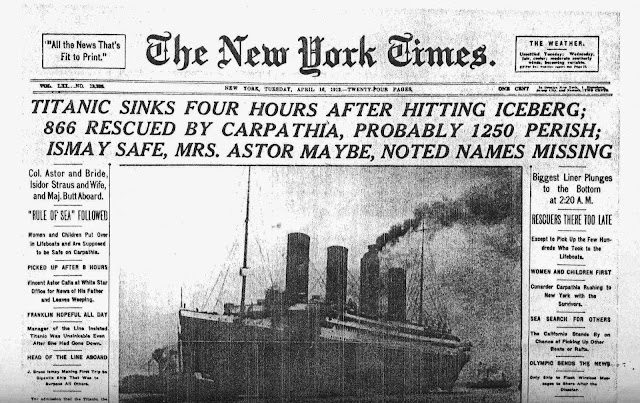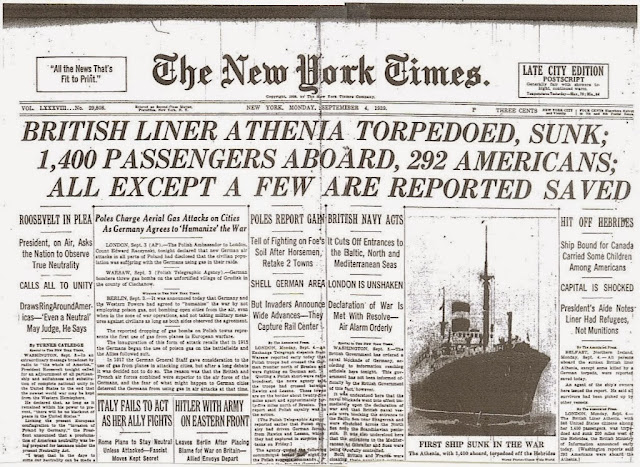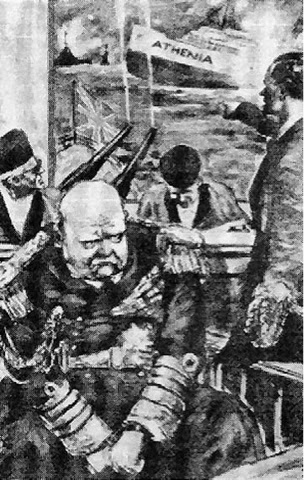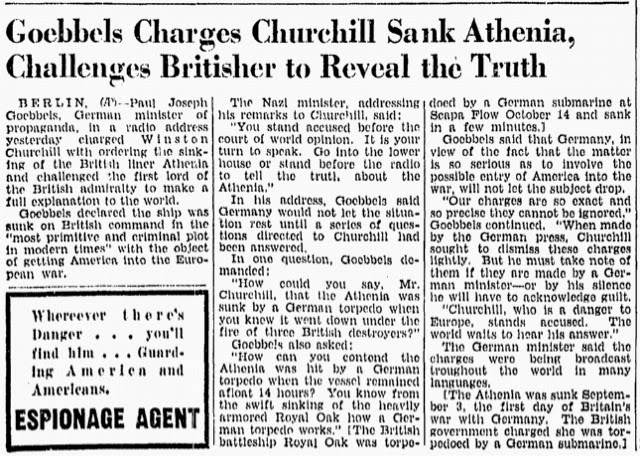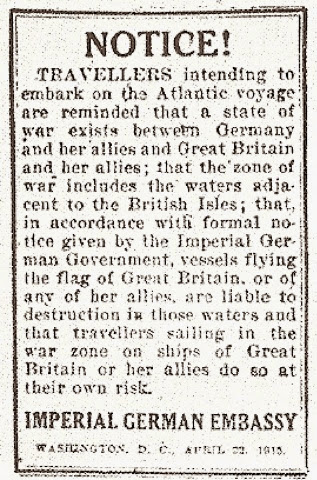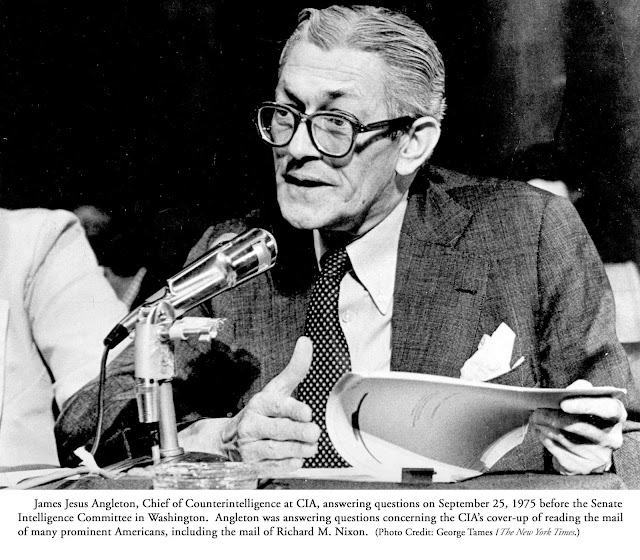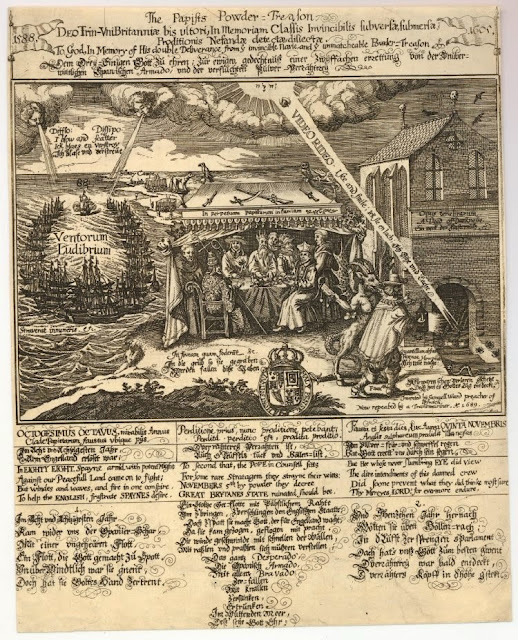"Even James Jesus Angleton, the CIA's director of counter-intelligence, who also was responsible for liaison with Israel, had his problems when it came to the Israeli bomb. The moody Angleton was legendary — and feared — for his insistence on secrecy and his paranoia about Soviet penetration of the Agency.
He was a master of backchannel and "eyes only" reports, and his increasing inability to deal with the real world eventually led to his firing in late 1974, but his glaring faults in counter-intelligence apparently did not spill over to Israel* Former Agency officials, who, in prior interviews with me, had been unsparing in their criticism of Angleton's bizarre methods in counterintelligence, acknowledged that he had performed correctly and proficiently in his handling of Israel. Angleton had worked closely with members of the Jewish resistance in Italy while serving with the Office of Strategic Services (OSS) at the end of World War II; it was a dramatic period when thousands of Jewish refugees and concentration camp survivors were being illicitly funneled from Europe into Palestine, then under British control.
One of Angleton's closest colleagues was Meir (Meme) Deshalit, a resistance leader and Israeli intelligence official who had been posted to Washington in 1948. Deshalit was the older brother of Amos Deshalit, the physicist who had done much to develop Israel's nuclear arsenal before dying of cancer in 1969. Angleton shared Meir Deshalit's view of the Soviet and threat to Israel; his personal contacts and strong feelings made him the logical choice to handle liaison between the CIA and
the Israeli government. His was one of the most important assignments in the 1950s and early 1960s, the height of the Cold War, because of the continuing flow of Soviet and Eastern European refugees into Israel. Angleton and his Israeli counter- parts ran the "rat lines," as the Jewish refugee link became known. It was the Jewish refugee operations, as many in the CIA understood, that provided the West in the early postwar years with its most important insights into the Soviet bloc. Some of the programs were financed off the shelf by CIA contingency funds, as part of kk mountain.
Angleton's love for Israel and his shared views on the Arab and Soviet question, however, did not keep him from investigating, as a counterintelligence officer, any Israeli or American Jew he suspected of trafficking in classified information. One of the big question marks was nuclear technology. The CIA knew from its analysis of the fallout of the ongoing French nuclear tests in the Sahara that the increasingly modernized and miniaturized French warheads were based on United States design.
A former American nuclear intelligence official recalled that he and his colleagues "were driven crazy" by the suspicion that Israel's quid pro quo for the French help at Dimona included access to design information purloined from the government's nuclear laboratories at Los Alamos and Livermore, California.
No evidence of such a link was found, but intelligence community investigators were surprised to discover at the end of the chaos inquiry a cache of Angleton's personal files, secured with black tape, that revealed what obviously had been a long-running — and highly questionable — study of American Jews in the government. The files showed that Angleton had constructed what amounted to a matrix of the position and Jewishness of senior officials in the CIA and elsewhere who had access to classified information of use to Israel. Someone in a sensitive position who was very active in Jewish affairs in his personal life, or perhaps had family members who were Zionists, scored high on what amounted to a Jewishness index.
One government investigator, talking about the Angleton files in a 1991 interview, recalled his surprise at discovering that even going to synagogue was a basis for suspicion. "I remembered the First Amendment," the investigator added sardonically. "You know, Freedom of Religion." The Angleton matrix suggested that at some point a suspect who measured high enough on the Jewishness scale was subjected to a full-bore field investigation. "Was there simply a background check, or
was there physical or electronic surveillance?" the investigator asked rhetorically. "I don't know. I was angry but at the same time thought it wasn't irrational because a lot of Jews were giving help to Israel." In the end, the Angleton files were not investigated further or even brought to the attention of the House or Senate intelligence committees: "We decided not to do anything with it."
Samuel Halpern, a Jew who served for years as executive assistant to the director of the CIA's clandestine services, was under constant investigation by Angleton. Halpern's position, the highest reached by any Jew in the clandestine service, gave him access to the name and background of every foreigner who had ever been recruited by the CIA. His father, Hanoch, was a Pole who had become active in Zionism before World War II and, after emigrating to Palestine, had worked closely with Ben-Gurion and Moshe Sharett, among others, after the State of Israel was formed in 1948. "Jim looked at me real hard," Halpern recalled with a laugh, "but I told him, 'I'm not going to muck up your desk.' The Israelis never approached me. Why should they when I'm sitting on the third floor [of the CIA] and
Jim's on the second?"
Angleton did more than just collect information on American Jews. He also was a sponsor, through the chaos program, of a highly secret CIA operation involving the Agency's purchase of a Washington trash collection company. The firm, known in the CIA as a proprietary, had contracts to pick up
garbage at various Third World embassies, including the Israeli embassy. Another of its stops was the downtown Washington offices of B'nai B'rith, the powerful Jewish social and volunteer organization with worldwide activities. The trash would be systematically sorted and analyzed for any possible intelligence.
Angleton's close personal ties with the Deshalit family and others in Israel made it inevitable that he would learn about the construction in the Negev. One senior official recalled that Angleton's first intelligence report on Israel's plans to build the bomb was filed routinely in the late 1950s, and not by backchannel, and thus could be made available to those who needed to know inside the CIA's Directorate of Operations, the unit responsible for clandestine action. "I have no idea who his
sources were," the senior official said. "He probably never told the director." Over the next few years Angleton continued to produce intelligence on Dimona, also based on information supplied by his personal contacts, but never learned — or, at least, never reported — the extent to which Israel was deceiving Washington about its nuclear weapons progress.
Angleton, of course, had been given periodic briefings in the late 1950s and early 1960s by Lundahl or Brugioni on the intelligence collected by the U-2 overflights of the Negev, but never evinced much interest. His forte was human intelligence, or humint, as the intelligence community calls it, and not technical intelligence, such as the U-2 imagery. "He was a real funny guy," Brugioni recalled. "I'd meet with him, brief him; he'd ask a few questions, you'd leave — and never know what he's holding. Sometimes he'd have his office real dark and have a light only on you. He was a real spook."
For all of his mystique and freedom to operate, Angleton, too, was stymied by the Israeli bomb. His reports on Dimona, buttressed by the U-2 data, did not even result in an official CIA estimate that Israel was going nuclear. Such formal estimates, which are distributed to the President and other key
government officials, were the responsibility of analysts in the CIA's Office of National Estimates (ONE). "Jim kept saying, 'Yes, they've got it,' and the analysts would say, 'I don't believe it,' " one former intelligence official recalled. The analysts simply did not think Angleton's humint sources were reliable, the official said, adding that tension and second-guessing over human intelligence sources were a way of life in the CIA. By 1965, an extensive dossier of humint reports on Dimona had built up, the official said, and the nuclear issue was again raised with the ONE analysts: "They told me that even if Israel did have the bomb, they'd never use it."
The intelligence official, recalling the issue in an interview, got angry again at the analysts: "They were so stupid. You'd have to put the bomb under their noses before they'd believe it. They didn't have any understanding of Israel; didn't know what made them think. They were so stupid."
It is not known how many CIA analyses on the Israeli bomb were produced in the early 1960s by the Office of National Estimates, but the one memorandum that does exist was astonish-
ingly inept about Israeli attitudes. The paper, entitled "Consequences of Israeli Acquisition of Nuclear Capability," was dated March 6, 1963, and was made available nearly twenty years later at the John F. Kennedy Library without any deletions. The national estimate concluded that Israel, once having attained a nuclear capability, "would use all the means at its command to persuade the U.S. to acquiesce in, and even to support, its possession. . . . Israel could be expected to use the argument that this possession entitled it to participate in all international negotiations respecting nuclear questions and disarmament." The staggering flaw in the CIA analysis was its basic assumption: that Israel would make public or otherwise let its nuclear capability become officially known. The reality
was precisely the opposite: Israel had no intention of going public with the bomb in fear of American and worldwide Jewish disapproval that would result in international reprobation and diminished financial support from the Diaspora.
Such flawed intelligence analyses went a long way toward keeping the men at the top officially ignorant of what no one wanted to know. In public, the Johnson administration, as were its predecessors, was firmly opposed to the spread of nuclear weapons anywhere in the world; official acknowledgment
of an Israeli bomb would have presented Washington with an unwanted dilemma — either sanction Israel or be accused of a nuclear double standard"
* The first prominent public mention of Angleton's role in counterintelligence came in a major front-page expose by the author in the New York Times of December 22, 1974. The story linked Angleton and his office to Operation chaos, the massive and illegal spying by the CIA on antiwar dissidents in America. Angleton, in a telephone conversation with me before the story was published, suggested that he could provide better stories, dealing with Communist penetration of the antiwar movement and CIA operatives in the Soviet Union, if the domestic spying story was not published. On the day of its publication, a Sunday, as I later wrote in the Times, Angleton telephoned me very early at home and complained that Cecily, his wife of thirty-one years, had learned only by reading my story that her husband was not a postal employee, as Angleton claimed he had told her. He added: "And now she's left me." The call shook me up; the upset in his voice seemed real. I mumbled something about a newsman's responsibility to the truth, hung up, and telephoned an old friend who had served in the CIA with Angleton. He laughingly told me that Cecily of course had known from the beginning what her husband did for a living, and had left him three years earlier to move to Arizona, only to return.





